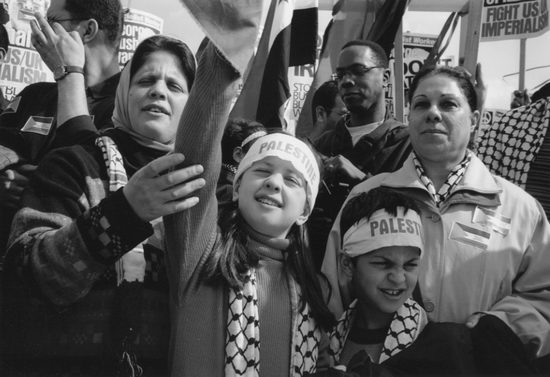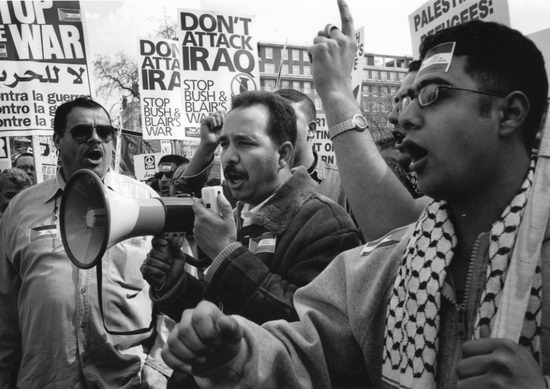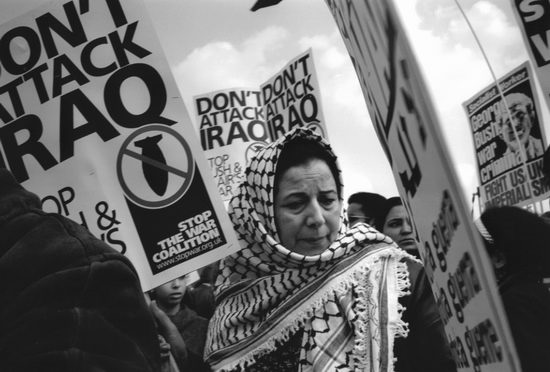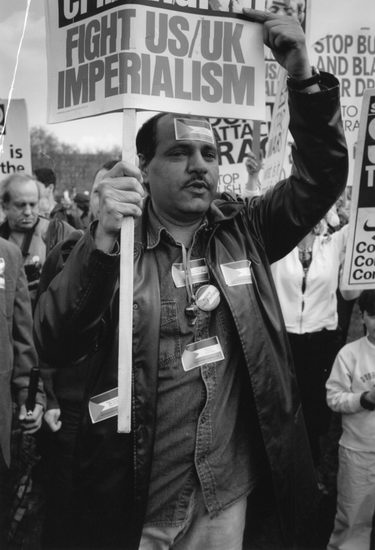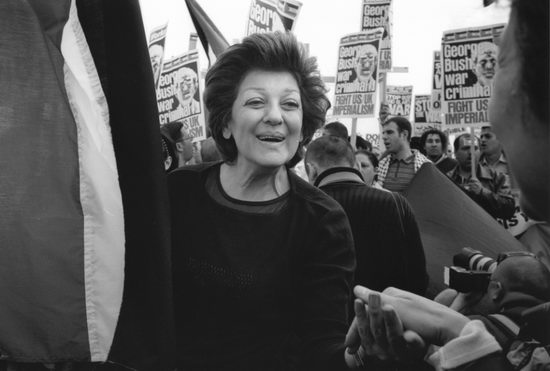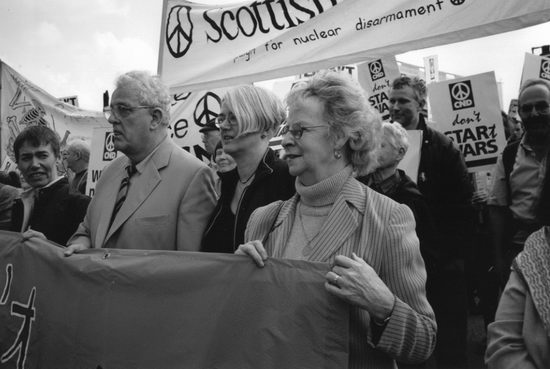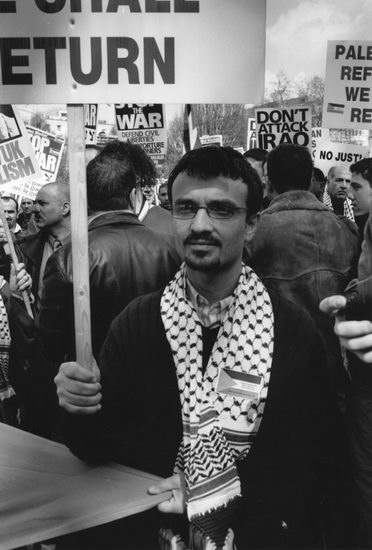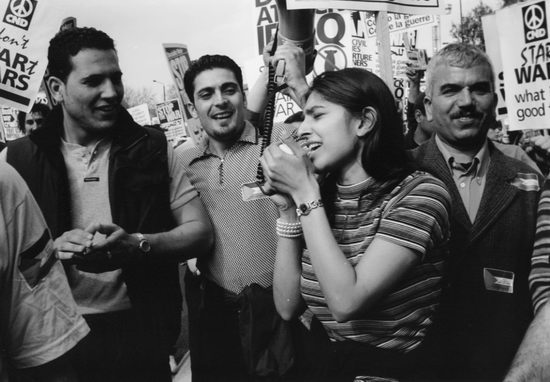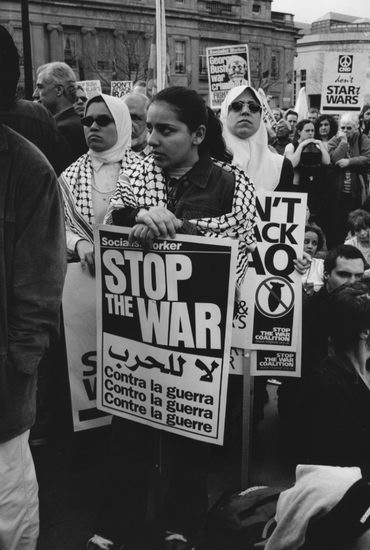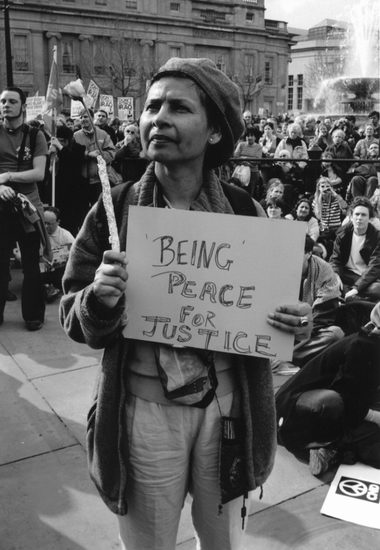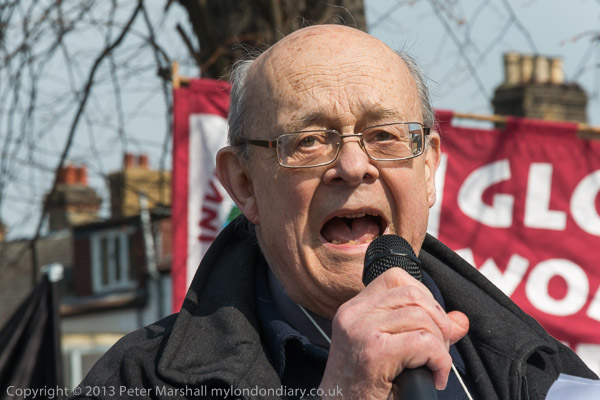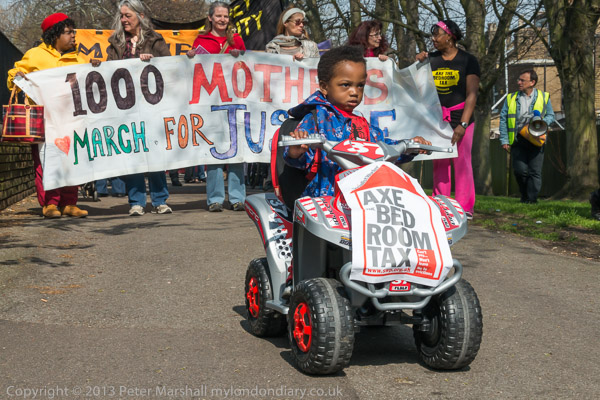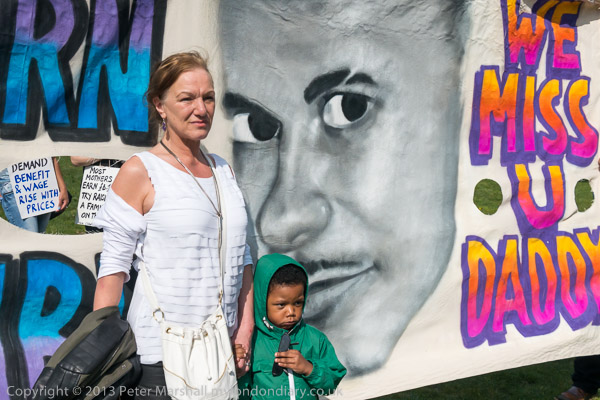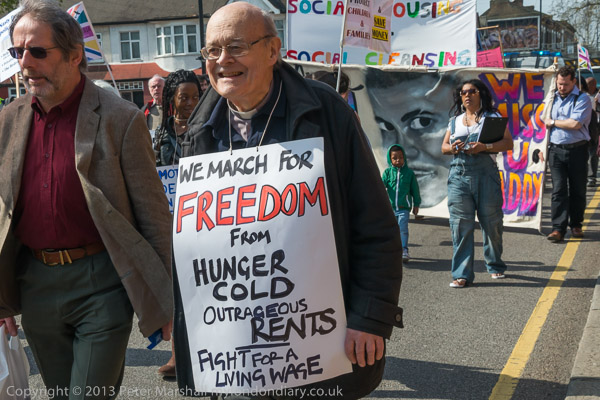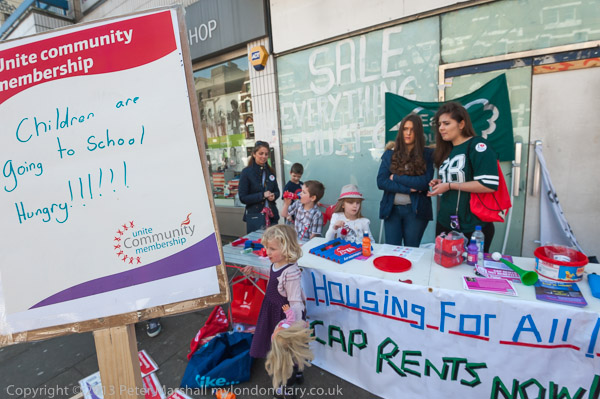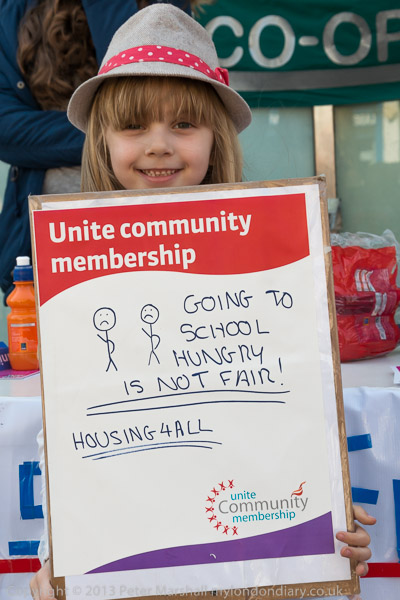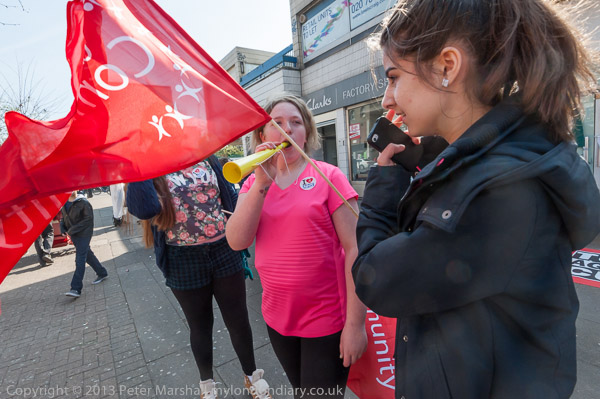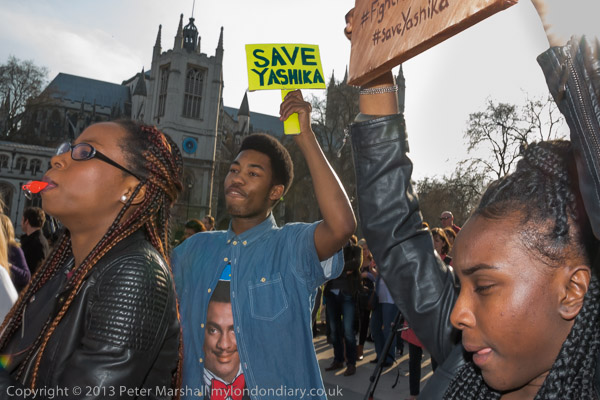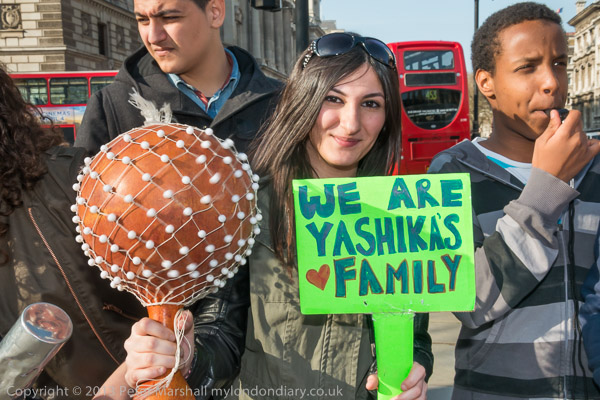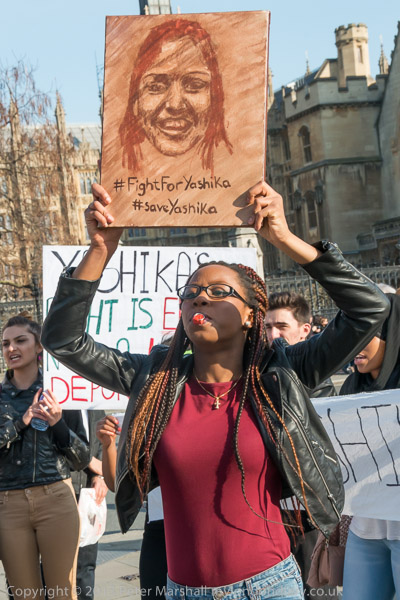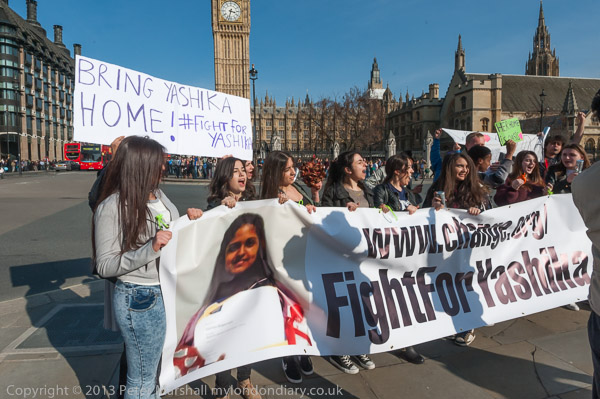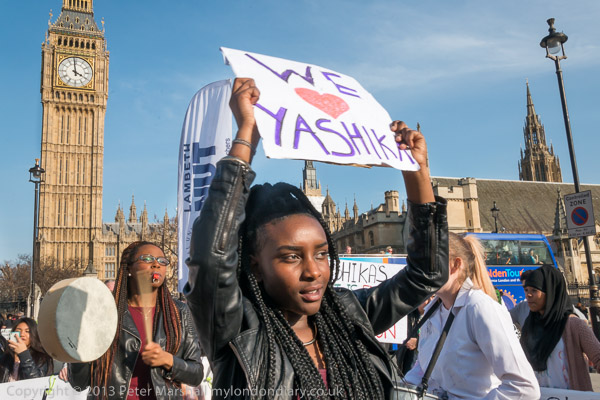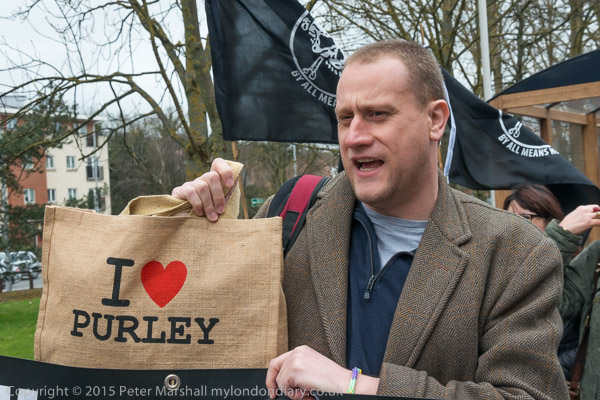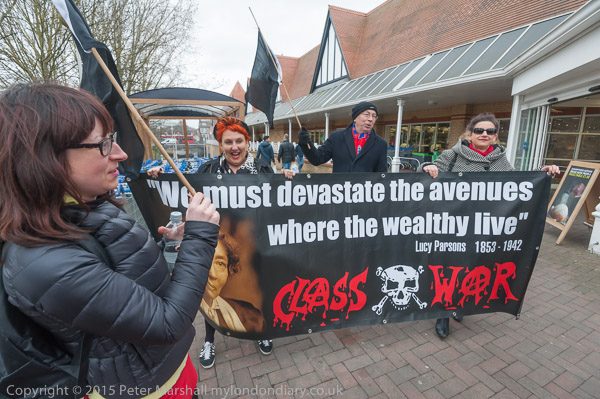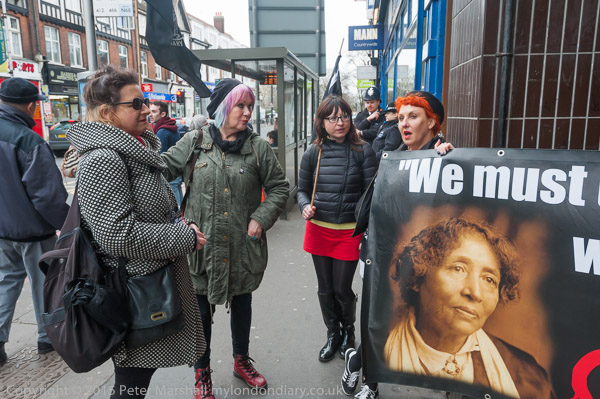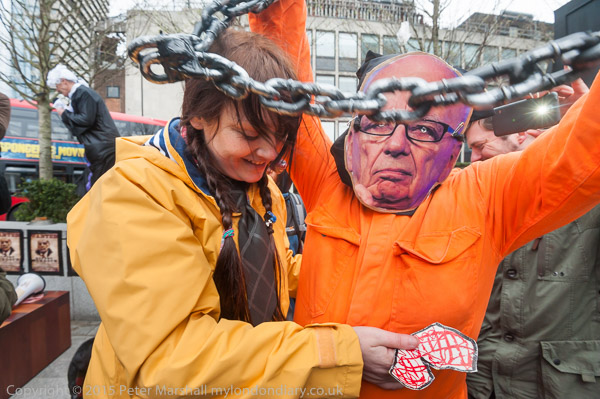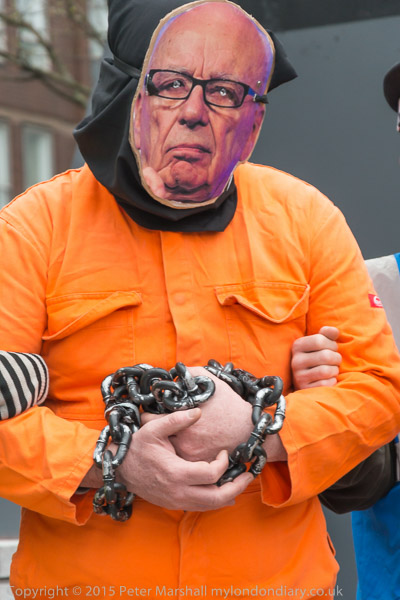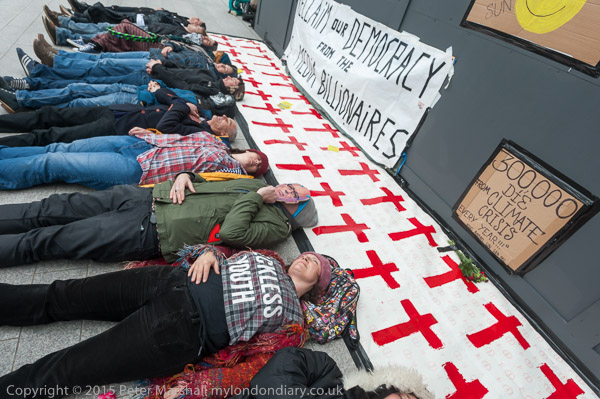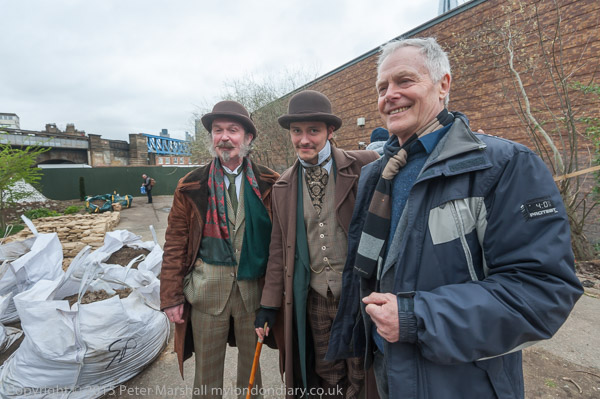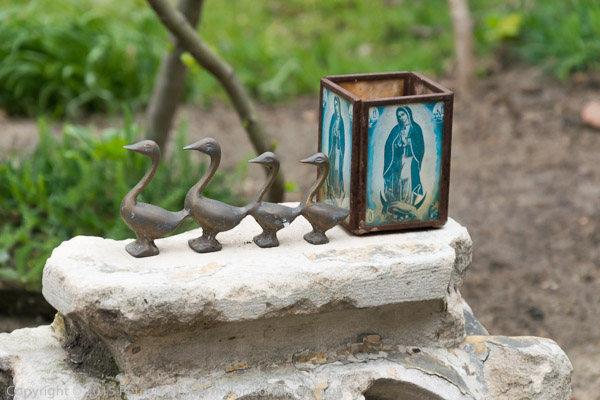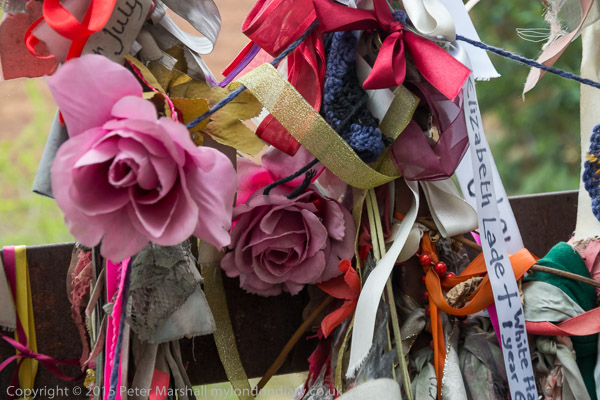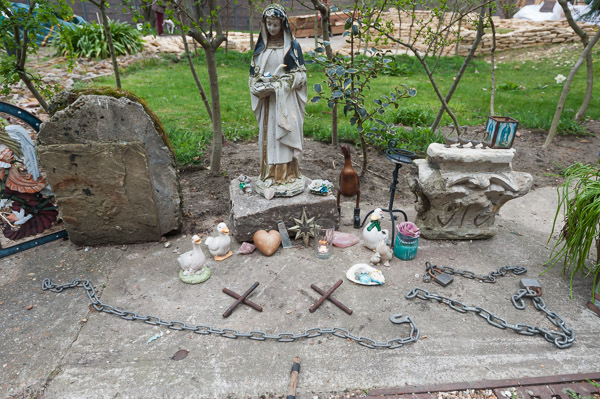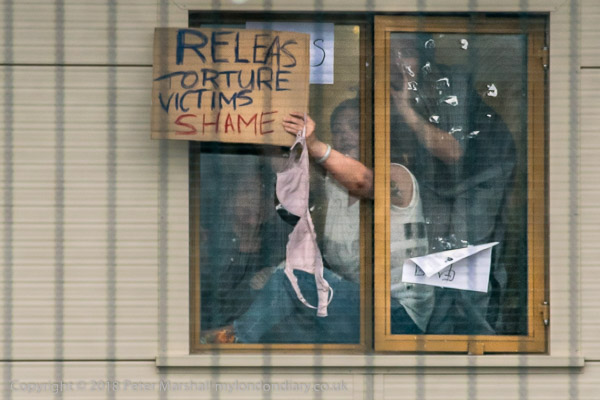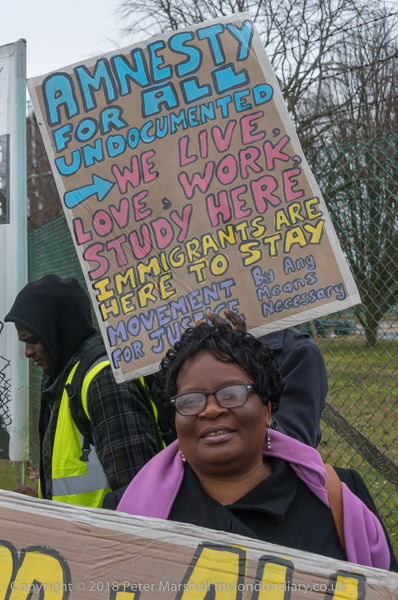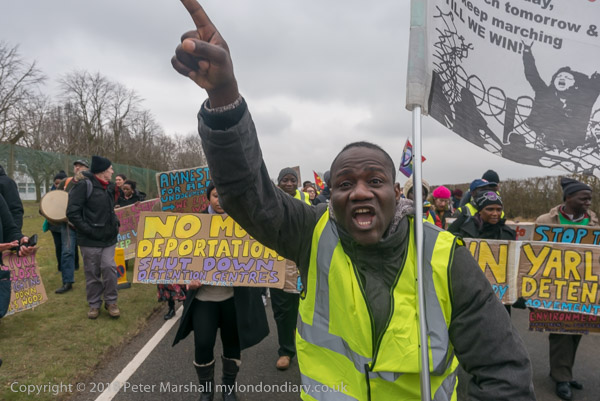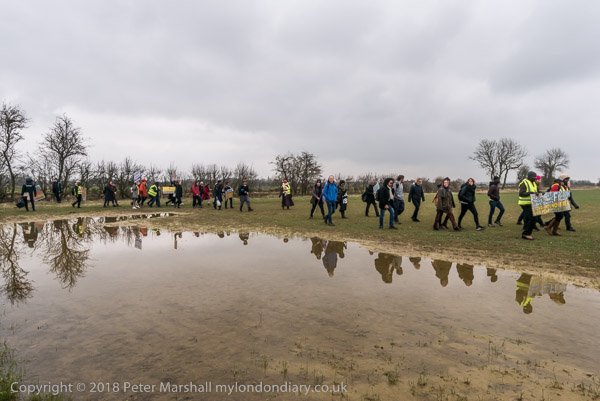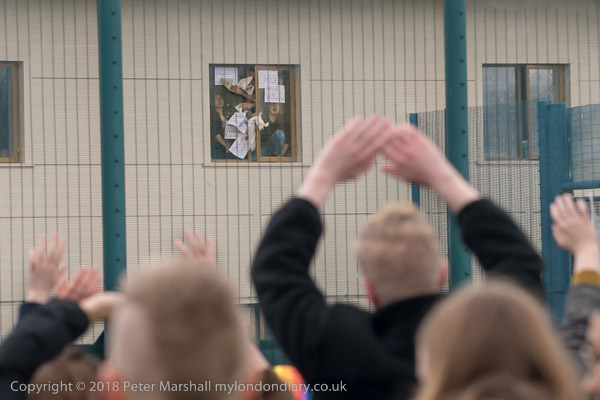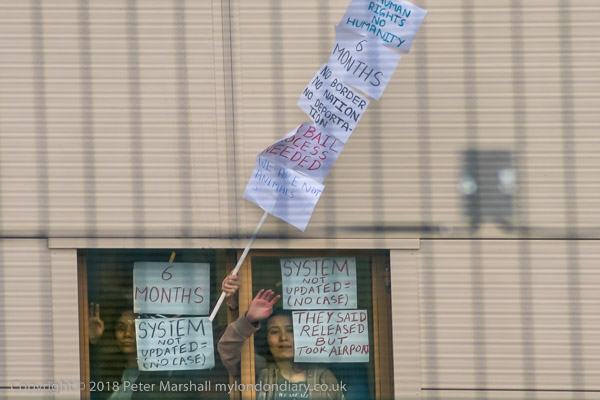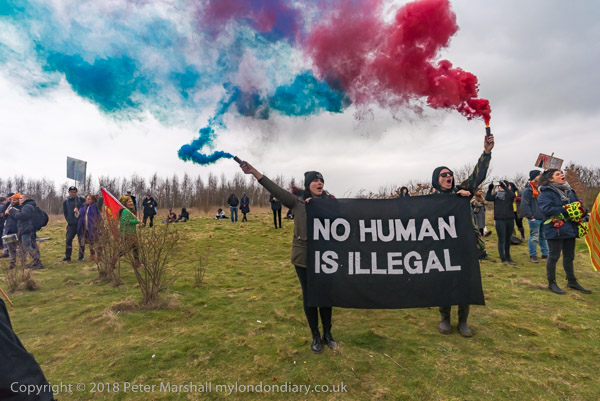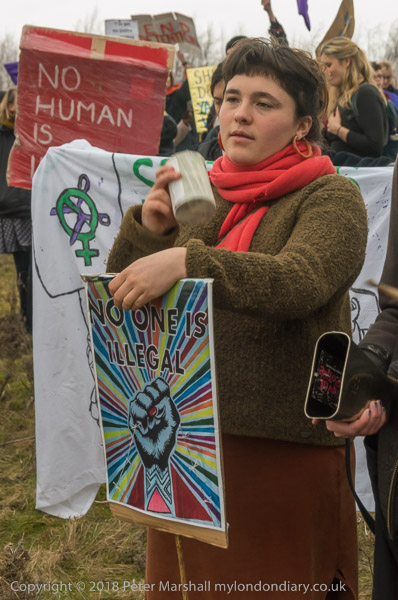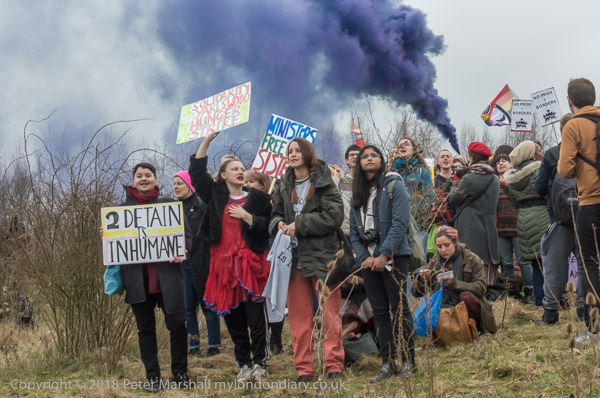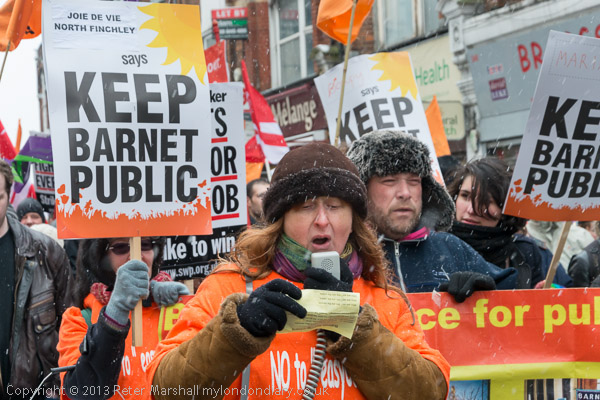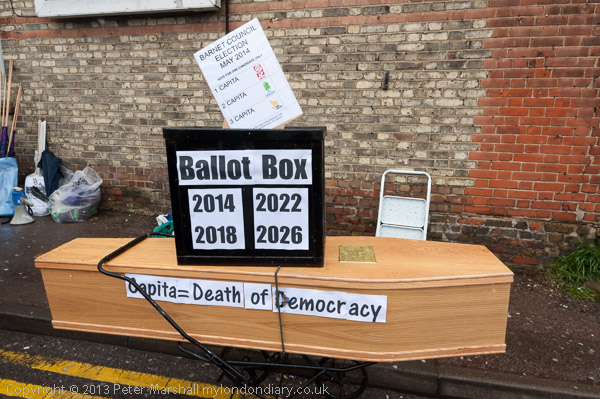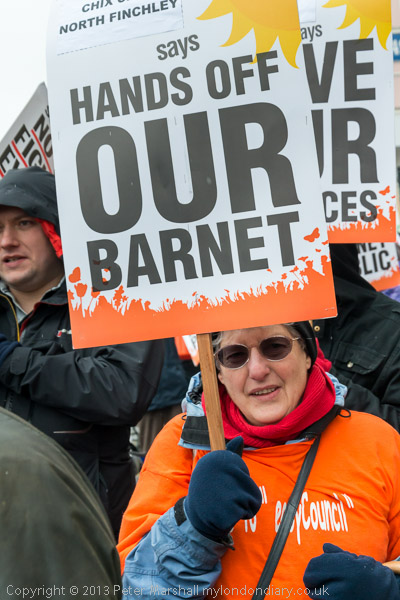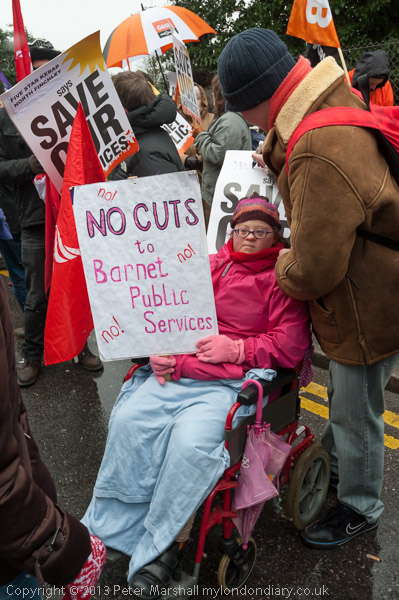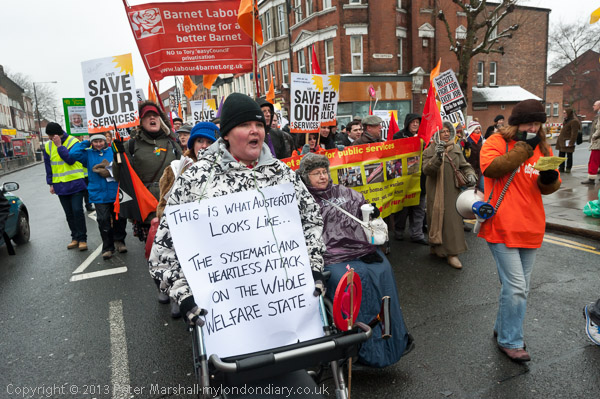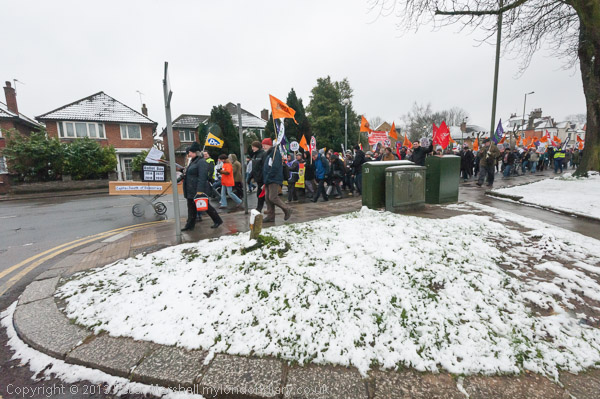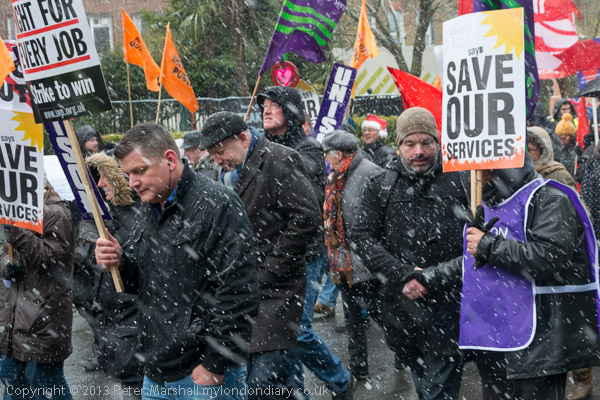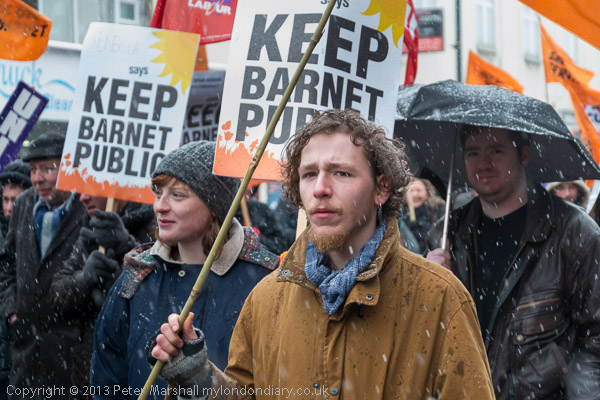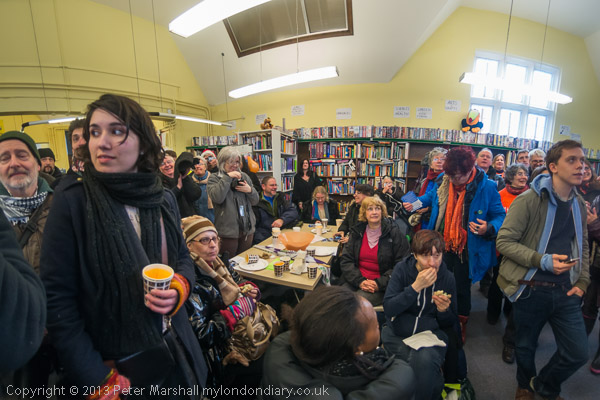Palestine Land Day, Bunny Hop, and Afrin. Saturday 31st March 2018 was Holy Saturday, the day between Good Friday and Easter Day which most people now call Easter Saturday, though more correctly this comes a week later. But only one of the four events I photographed that day was connected to Easter.
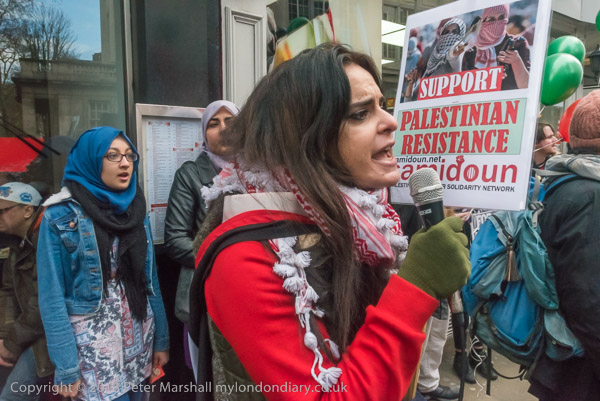
Land Day protest against supporters of Israeli state – Oxford St
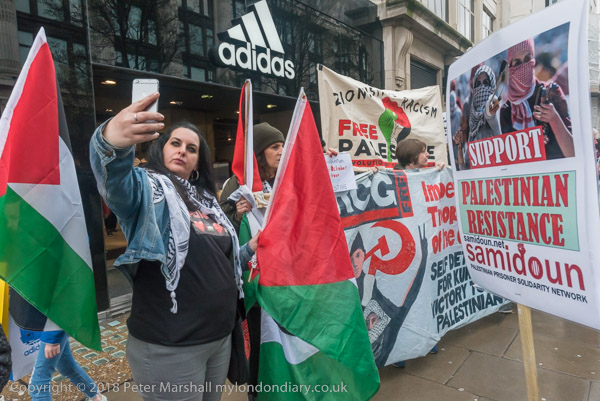
Palestine Land Day, observed annually by Arab citizens of Israel and Palestinians across the world, remembers the day in 1976, March 30th when a general strike and protests were called in Arab towns in Israel against plans by Israel to expropriate around 8 square miles of land in Galilee for Jewish settlements, about 2.5 square miles of which was Arab owned. The Israeli government tried to suppress the protests using police and the army as well as threatening strikers with dismissal. Six unarmed Palestinians were shot and killed and there were many injuries.
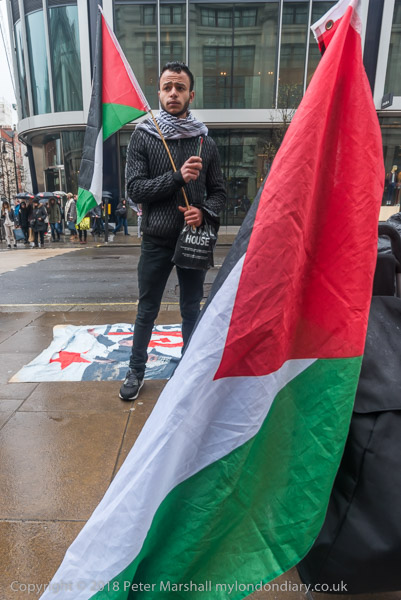
The annual Land Day celebrations since then in Israel have often been marked by violent attacks on protesters, with injuries and deaths. On 30th March 2018 Israel Defence Force snipers were placed in position on the separation wall in Gaza and opened fire on unarmed protesters several hundred yards away using live ammunition. 17 Civilians were killed and over 750 seriously injured by live fire, others injured by rubber bullets and tear gas.
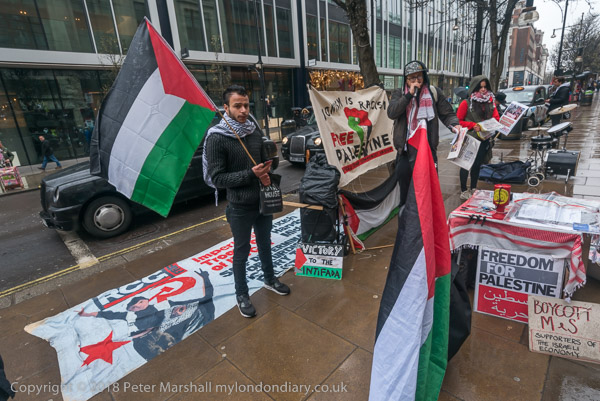
This protest was led by a group which have been protesting regularly outside the Oxford Street main store of Marks & Spencers for many years against their support for Israel. They had planned a large rolling protest for the day following Land Day, going along Oxford Street stopping for short speeches outside stores with business links with Apartheid Israel, calling for shoppers to boycott them for selling Israeli goods. While I was with them as well as Marks & Spencers they also protested outside Selfridges, which sells Israeli wines, Adidas which supports the Israel football team, Boots which sells cosmetics made in Israel and Carphone Warehouse.
Land Day protest against Israeli state
BMXLife Charity Bunny Hop – Oxford St
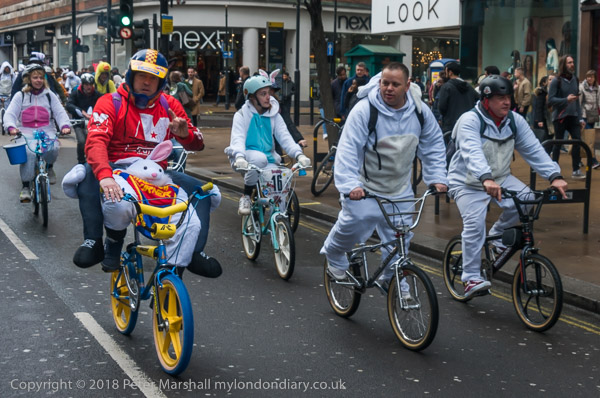
BMX Life is a group of BMX bike riders started after young Tommy Wright suffered a near fatal heart attack, and his family wanted to give something back after the support they had received at Evelina London Children’s Hospital. They have since raised over £60,000 for the register charity Evelina Children’s Heart Organisation ECHO.
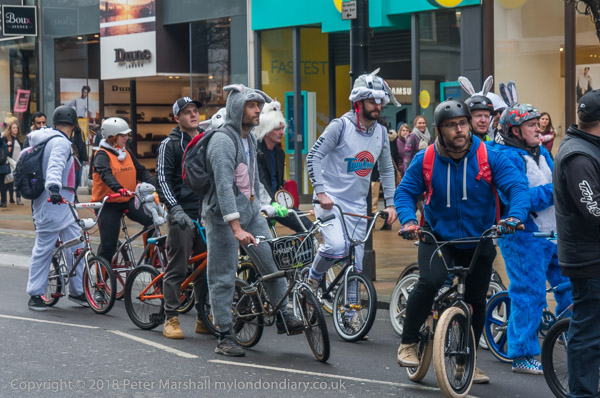
The riders dressed as Easter Bunnies for what was their 4th Bunny Hop ride-out in London. Previously I’d met them riding at Christmas dressed as Santas and reindeer.
Defend Afrin – Bring Anna Home – Oxford St
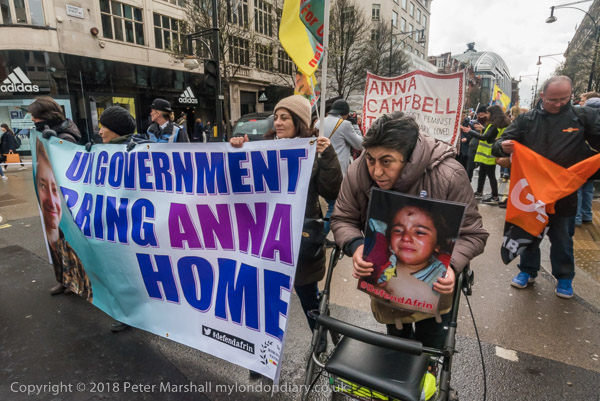
Kurds and supporters marched from close to Marble Arch to a rally in Parliament Square demanding an end to the invasion of Afrin in north-west Syria by Turkish forces and al Qaeda-affiliated militias in clear violation of international law, and its air strikes have deliberately targeted civilian areas.
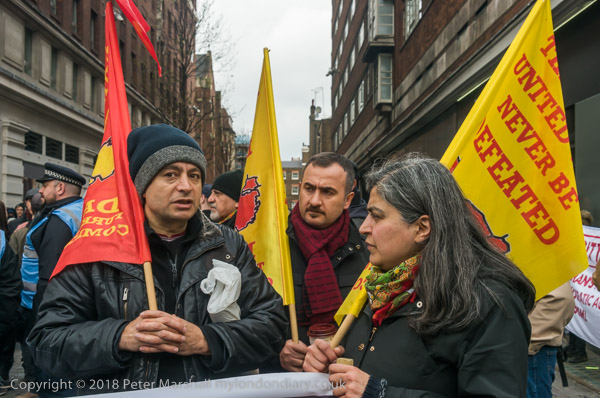
The Turkish aim is to destroy a peaceful state and eliminate its majority Kurdish population, with President Erdogan announcing Turkey’s intention to invade all the Kurdish areas of Syria and “cleanse” the area of its Kurdish people.
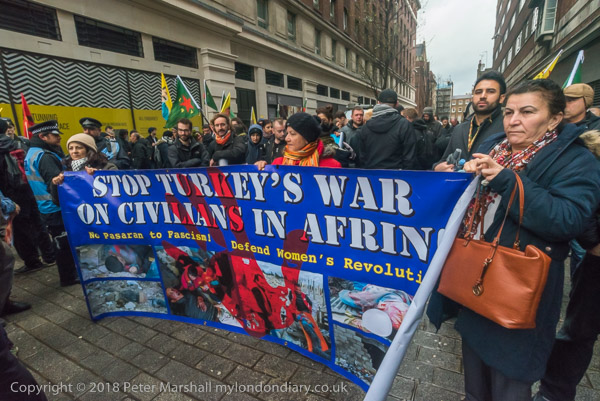
Turkey is a member of NATO, with the organisation’s second largest army, supplied with weapons mainly from European countries including the UK who had recently signed a major arms deal. The British government has disgracefully expressed support for Turkey’s attacks, claiming it has a right to defend its borders, despite the fighting being outside them and the announced intention to push on to even more distant areas in Syria. The Kurdish peoples protection units YPG and YPJ fighting the attacks are only lightly armed but were putting up a determined resistance, but without further support were unable to defeat Turkey.
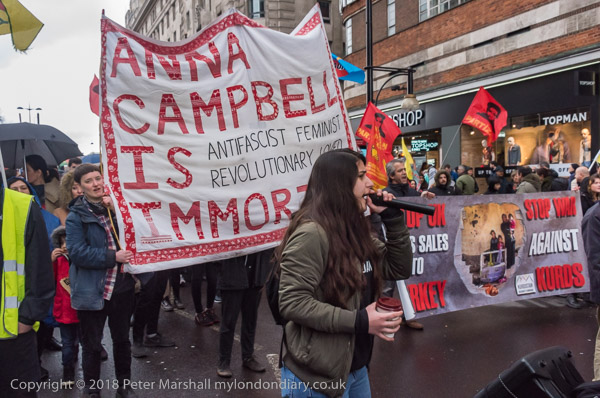
The protest called for an end to the invasion of Syria with an immediate ceasefire to enable the body of YPJ volunteer Anna Campbell to be returned to her family in Sussex, an end to all arms sales, to Turkey and other anti-human regimes in the Middle East, for humanitarian relief for Afrin and other areas of Syria and for an investigation into human rights abuses and war crimes in Afrin.
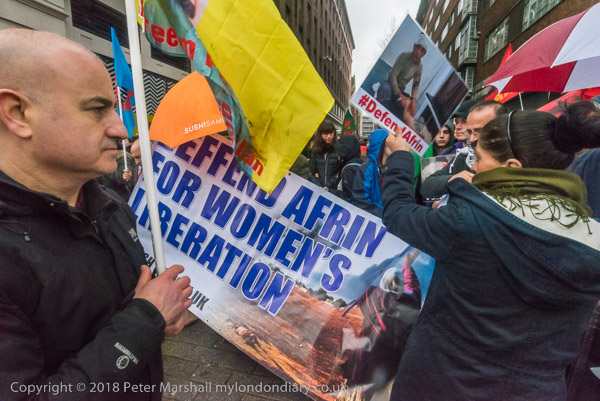
Eventually, after Afrin was captured, pressure from the US and the Council of the European Union condemning Turkey’s military action brought Turkish advances to an end, until President Trump withdrew US forces from the area, betraying the Kurds who had defeated ISIS with US air support. Further Turkish attacks then took place but were internationally condemned.
Defend Afrin – Bring Anna Home
Against Israeli Land Day massacre – Israeli Embassy, Kensington
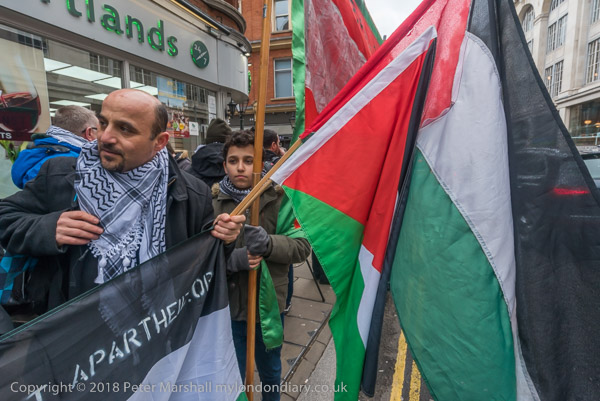
News of the cold-blooded massacre of Palestinian Land Day protesters with videos that shocked the world on March 30th led to an emergency protest being called close to the Israeli embassy on Kensington High Street (the embassy is a few yards away on the private Kensington Palace Gardens where no protests are allowed.)
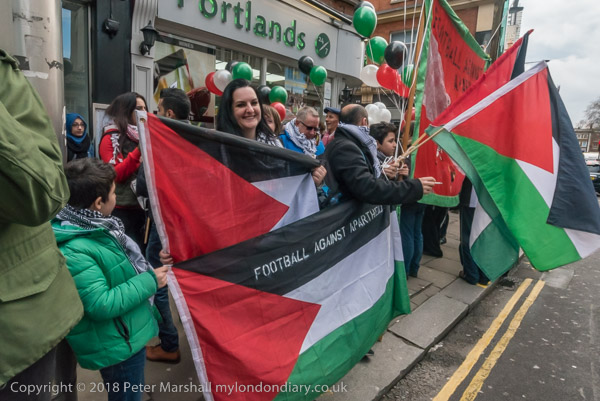
I wrote “It is hard to see how anyone with the slightest streak of humanity or decency can fail to condemn the cold-blooded shooting of unarmed civilians carrying out a peaceful protest, but the coverage of the event in the UK media has been surprisingly muted, with the BBC giving considerable air-time to Israeli state speakers who have shamefully claimed the massacre was reasonable and fully justified.”
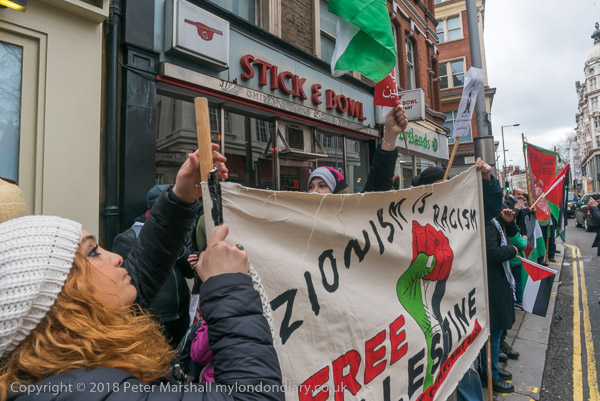
The UN called for an independent investigation, which Israel refused. But it was perhaps not coincidental that this is the only protest I can recall at the embassy where there has not been a usually small group of counter-protesters waving Israeli flags in support of the regime and its actions. But more likely it was because it was Passover.
Against Israeli Land Day massacre
